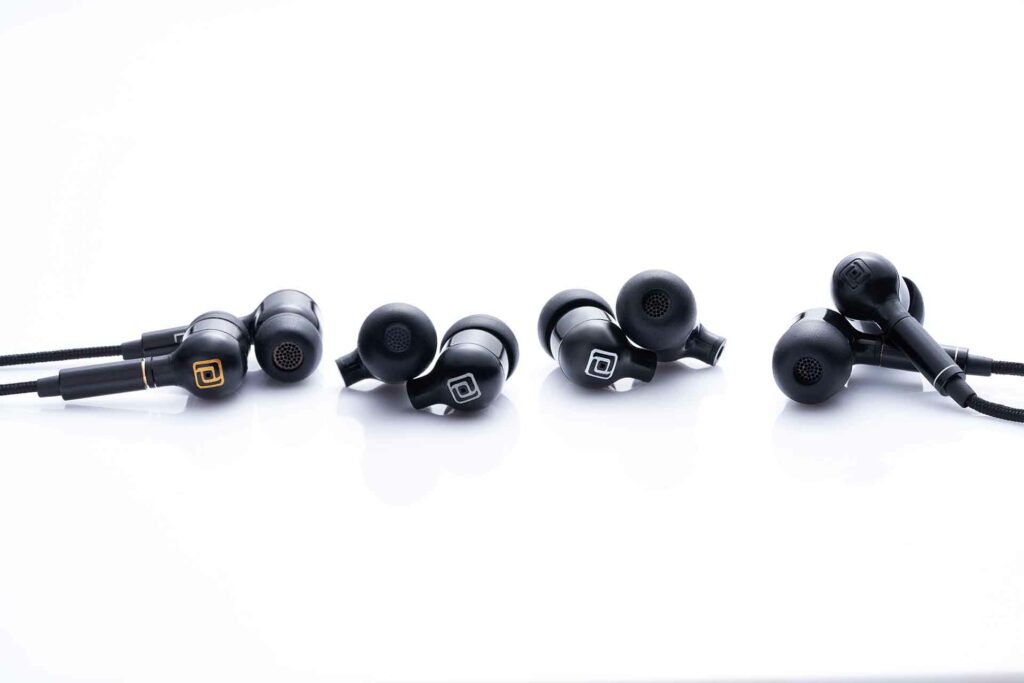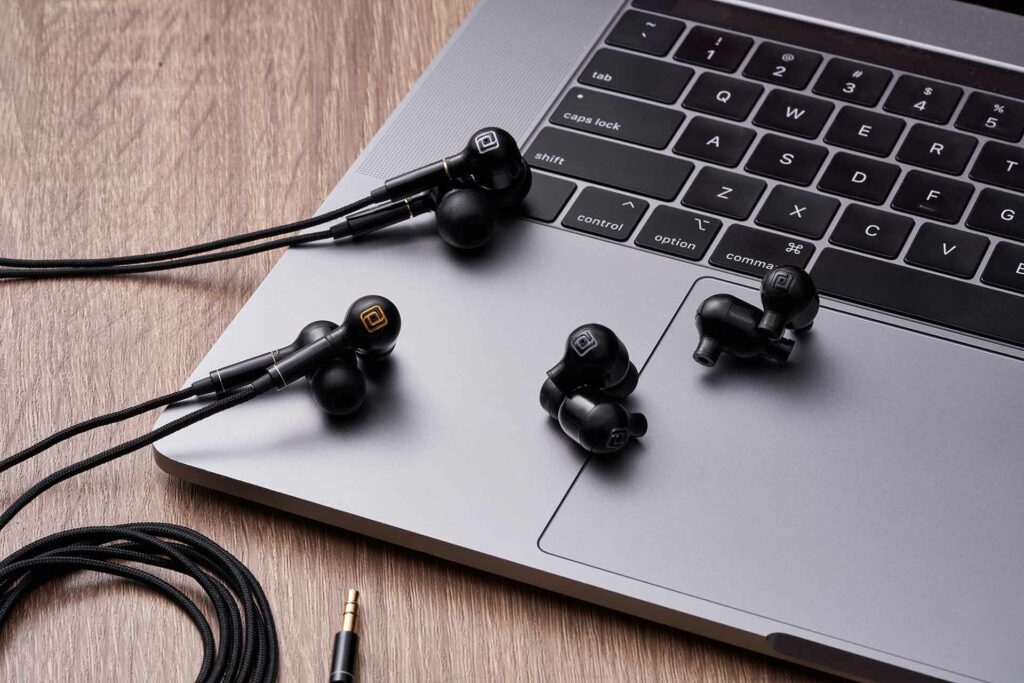Periodic Audio announces a price reduction for its line of V3 in-ear monitors launched earlier this year. The company will move to a direct model and as a result will pass distribution cost-savings to its loyal customers.
“We feel so strongly that our line of IEMs represents significant value for the consumer,” said Dan Wiggins, co-founder of Periodic Audio. “We’ve spent years researching materials, acoustic geometries, mechanical architectures, and the relationships between them culminating to the new generation of products. After working hard to refine our manufacturing and material processes, our next logical step to reach a wider audience to eliminate additional operational overhead costs resulting in a direct sale model for North America.”

The V3 IEMs retain Periodic Audio’s critically acclaimed proprietary sound engines, all developed in-house. Their ultra-wideband, high-efficiency, low-distortion, dynamic speaker elements are designed to perform with maximum reliability.
The material of an In-Ear Monitor’s body plays a critical role in its sound quality, comfort, and reliability. Periodic Audio partnered with Eastman Chemical in what became a three-year project researching the optimal material for an In-Ear Monitor. The Periodic team found that Tritan—a new-generation copolyester used in many medical devices—provided the best measurable and audible improvements in sound, in terms of transient distortion and harmonic distortion, of any material the Periodic team has measured.

The failure point in wired headphones is almost always the wires themselves. The Periodic Audio team channeled lessons from the past to improve the future. Tip-ring-sleeve (TRS) and tip-sleeve (TS) connectors, invented in the 1800s, are still widely used today for their exceptional reliability. However, because no such connector is small enough to fit inside an In-Ear monitor, Periodic has designed the IDEEL connector. Measuring just 3.6mm wide, with a mounting depth of 9.5mm, the IDEEL connector fits a standard 2.5mm TS plug. Nearly indestructible, the IDEEL is strong enough to endure the rigors of daily attachment and detachment of cables. And if something does go wrong, your In-Ear Monitor investment is safe—you can simply replace the cables.
Periodic Audio also designs its own eartips, made from medical-grade materials. The eartips provided with each of Periodic’s IEM models are scientifically proven to fit more than 95% of human ear canals. Additional accessories include gold-plated ¼″ and airplane adapters, a 1.2-meter-long cable with single 3.5mm TRS to dual 2.5mm TS jack, and metal shells, all housed in a protective carry case.
Manufacturer’s Suggested Retail Pricing
Mgv3 (was $199 now $99)—Transducer material: 96% pure magnesium
Tiv3 (was $299 now $129)—Transducer material: Pure titanium
Bev3 (was $399 now $249)—Transducer material: Beryllium
Cv3 (was $499 now $299)—Transducer material: Lab-grown Diamond layer (8µm thick) on Periodic Audio’s proprietary high-temperature polymer substrate
Periodic Audio In-Ear Monitors: Summary
- All designed, engineered, and tooled in-house—Made in USA
- All use a single 10mm dynamic transducer – all designed in-house
- Custom-jacketed, reinforced, detachable cables
- All IEM bodies are made of Tritan copolyester composite for superior strength, light weight, and minimal resonance
- Proprietary medical-grade silicone eartips made in-house in three sizes
- Five-year warranty against manufacturing defects
All About the History of Audiophile Headphone Company, Periodic Audio
Periodic Audio is a U.S.-based headphone and audio company founded in 2016 with a clear mission: deliver high-quality in-ear monitors (IEMs) with scientifically driven design and transparent pricing. While many companies in the audiophile headphone market rely on branding, luxury materials, or elaborate packaging to convey value, Periodic Audio took a different path—focusing almost entirely on the acoustic science and materials engineering behind each model.
The company was co-founded by Dan Wiggins, a respected audio engineer with a background in transducer design. Wiggins had worked with a variety of well-known audio brands before launching Periodic Audio, and his engineering-first approach quickly became the backbone of the brand’s identity. The goal was to offer serious performance in compact, durable in-ear monitors that made thoughtful use of materials typically reserved for much more expensive products.
Periodic Audio’s naming convention is drawn from the periodic table of elements. Models like the Mg (Magnesium), Ti(Titanium), Be (Beryllium), and Rh (Rhodium) are named for the metal used in the diaphragm of the dynamic driver. Each element was chosen for its specific acoustic properties—mass, stiffness, and internal damping—all of which directly affect how the driver responds and how the headphone sounds.
For example, the Be model, featuring a pure beryllium diaphragm, quickly gained attention among audiophiles for its speed, resolution, and low distortion. Beryllium, a material found in some of the highest-end loudspeakers and headphones in the world, is incredibly light and stiff, making it an ideal driver material when properly implemented. Periodic Audio managed to bring this level of material engineering to a much lower price point by eliminating unnecessary features and selling direct to consumers.
One of the brand’s defining decisions was its commitment to single dynamic driver designs across the lineup. At a time when many companies were marketing hybrid or multi-driver IEMs, Periodic Audio focused on refining a single transducer to deliver full-range sound with fewer crossover-related phase issues. The belief was that with careful design and material selection, a single driver could reproduce music more cohesively and naturally than more complex systems.
Another hallmark of the brand was its minimalist approach to construction and accessories. The housings were made of lightweight polycarbonate, chosen for its acoustic neutrality and durability. The packaging was functional but not flashy, in line with the company’s no-nonsense focus on value and sound quality.



